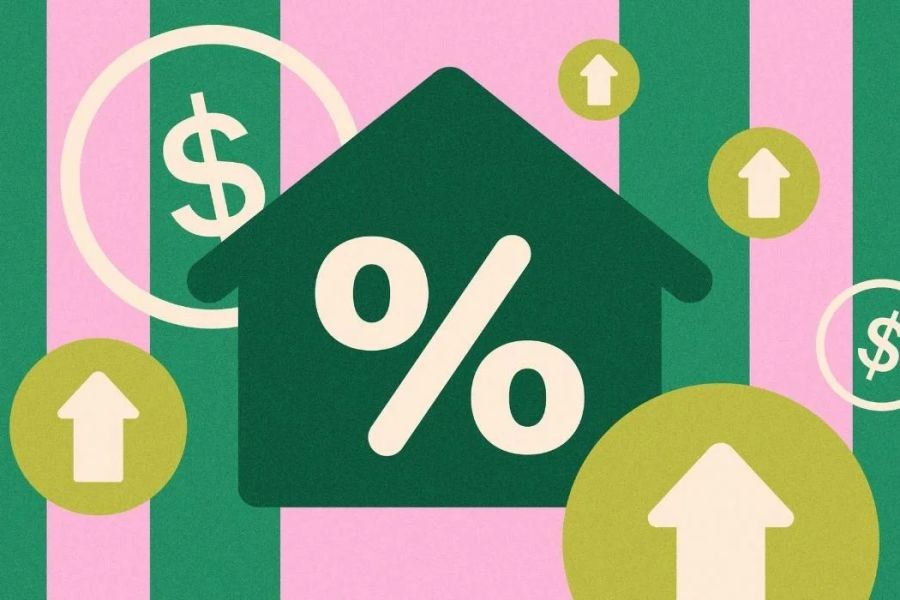Australia's property market has been a hot topic of discussion for years, with skyrocketing prices and increasing foreign investments raising questions about its sustainability. Is the Australian property market a bubble waiting to burst, or is it a resilient sector poised for further growth? This article delves into the intricacies of the market, providing a comprehensive analysis backed by data and expert insights. We will explore the factors driving the market, the potential risks, and what this means for investors, particularly those in the mining and resources sectors.
Understanding the Current State of the Australian Property Market
The Australian property market has seen unprecedented growth over the past decade. According to CoreLogic, property prices in major cities like Sydney and Melbourne have increased by over 60% in the last five years alone. This surge has been driven by a combination of low-interest rates, strong population growth, and increased foreign investment. However, this rapid growth has also led to concerns about affordability and market stability.
The Reserve Bank of Australia (RBA) has maintained low-interest rates to stimulate economic growth, further fueling the housing boom. While this has been beneficial for homeowners and investors, it has also raised questions about the sustainability of current price levels. A report from the Australian Bureau of Statistics (ABS) highlights that household debt levels have reached unprecedented heights, making the economy vulnerable to interest rate hikes or economic downturns.
Key Drivers of the Property Market Boom
- Low-Interest Rates: The RBA's monetary policy has kept borrowing costs low, encouraging more Australians to take out mortgages.
- Population Growth: Australia’s population has been growing steadily, driven by both natural increase and net overseas migration, leading to higher housing demand.
- Foreign Investment: Foreign buyers, particularly from China, have been active in the Australian property market, further inflating prices.
Potential Risks and Challenges
Despite the booming market, several risks could potentially lead to a downturn. Rising interest rates, changes in government policies, and global economic instability are among the top concerns for investors.
Interest Rate Risk
Interest rates play a crucial role in the housing market. A sudden increase in rates could lead to higher mortgage repayments, potentially causing financial stress for homeowners. The RBA has signaled that while rates are currently low, they could rise if inflationary pressures increase.
Government Policy Changes
The Australian government has implemented several measures to cool the property market, such as tightening lending standards and imposing taxes on foreign buyers. These policies aim to stabilize the market but also pose a risk of dampening demand.
Global Economic Instability
The Australian economy is closely linked to global markets. An economic downturn in major trading partners like China could have significant repercussions on Australia’s property market. The mining and resources sectors, in particular, would be impacted, given their reliance on exports to these economies.
Analyzing the Bubble Hypothesis
The term "bubble" suggests that property prices are significantly overvalued and could crash. However, experts are divided on whether the Australian market fits this definition. Some argue that strong demand fundamentals support the current price levels, while others caution that prices are unsustainable in the long term.
Contrasting Views: Is It a Bubble?
- Pro-Bubble Argument: Critics point to the disconnect between wage growth and property prices, suggesting that the market is overvalued. They also highlight the high levels of household debt as a vulnerability.
- Anti-Bubble Argument: Proponents argue that the market is driven by genuine demand factors such as population growth and urbanization. They believe that prices are reflective of these underlying fundamentals.
A report by the Reserve Bank of Australia indicates that while there are risks, the market does not exhibit classic signs of a bubble, such as speculative buying driven by a "fear of missing out" mentality.
Case Study: The 2017 Sydney Market Correction
In 2017, Sydney experienced a market correction where property prices fell by about 10% over two years. This was largely attributed to regulatory changes, including tighter lending standards by the Australian Prudential Regulation Authority (APRA) and increased taxes on foreign buyers. While the market eventually recovered, this period serves as a reminder of the potential volatility in the property sector.
Lessons Learned
- Regulatory Impact: Government interventions can have a significant impact on market dynamics.
- Market Resilience: Despite the correction, the market showed resilience, eventually rebounding as demand fundamentals remained strong.
Investment Strategies: Mitigating Risks and Maximizing Returns
For investors, particularly those in the mining and resources sectors, understanding the nuances of the property market is crucial. Here are some strategies to consider:
Diversification
Investing in a diverse range of properties across different regions can mitigate risks. For example, while major cities may offer higher returns, regional areas could provide more stability and lower entry costs.
Focus on Fundamentals
Investors should focus on properties with strong demand fundamentals, such as those in areas with good infrastructure, employment opportunities, and population growth. This approach reduces the risk of investing in overvalued markets.
Stay Informed
Keeping abreast of market trends, policy changes, and economic indicators is essential. Resources like the Australian Financial Review and reports from the RBA and ABS can provide valuable insights.
Future Trends and Predictions
Looking ahead, several trends could shape the future of the Australian property market:
- Increased Urbanization: As more people move to urban areas, demand for inner-city properties is likely to remain strong.
- Technological Integration: The use of technology in real estate, such as virtual tours and digital transactions, will become more prevalent.
- Sustainability Focus: There will be a growing emphasis on sustainable building practices and energy-efficient homes.
According to a report by Deloitte, the Australian property market is expected to grow by 5% annually over the next five years, driven by these trends.
Conclusion
The Australian property market presents both opportunities and challenges for investors. While concerns about a potential bubble persist, the market's strong fundamentals and resilience suggest that it is not on the verge of collapse. By adopting informed and strategic investment approaches, investors can navigate this complex landscape and capitalize on its potential. As always, staying informed and flexible will be key to success in this dynamic market.
People Also Ask
How does the Australian property market impact the mining sector?
Higher property prices can lead to increased living costs, affecting employee retention and operational costs in the mining sector. However, strong property markets can also indicate healthy economic conditions that benefit resource exports.
What are the biggest misconceptions about the Australian property market?
A common misconception is that property prices will always rise. However, market corrections can and do occur, as seen in the 2017 Sydney correction. It's crucial to consider market fundamentals and external factors.
Related Search Queries
- Is the Australian property market overvalued?
- Australian housing market predictions 2025
- Impact of interest rates on Australian property
- Foreign investment in Australian real estate
- Australian property market crash history






























kristenwitcher
7 months ago